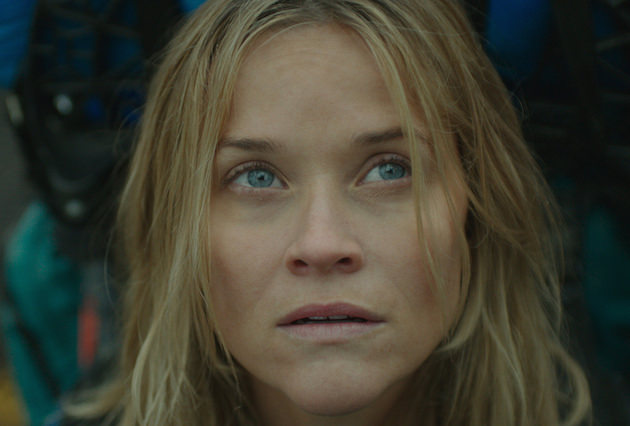Wild’s Cinematographer Yves Bélanger on Framing Face of America
Director Jean-Marc Vallée gathered a lot of his favorite collaborators for the upcoming Wild, which comes out this Friday, Dec 5. This includes his fantastic makeup department head, Robin Mathews, as well as his cinematographer Yves Bélanger. “I’ve known him twenty years,” Belanger says, “but there was always some reason we couldn’t work together.” Bélanger was wrapping up Laurence Anyway in 2012 when Vallée phoned him. “He said he had this great film, very low budget. I’d shot commercials without lights or dollies, so we could go faster, and he said, 'Let’s do the same thing…lets do a movie without a big crew, can you do that?' I said yes, I could.” That movie was Dallas Buyers Club.
As Robin Mathews told us, this streamlined approach to filmmaking presents certain difficulties for the crew. For her, it was the pressure of having to stop an otherwise perpetually in motion production (the camera is almost always running) to do her makeup work. For Bélanger, it’s being a part of a very, very small camera team that is filming from morning to night.
"We had a very small crew on Dallas, we had everything else, transportation, makeup, but for the camera, it was just myself and a grip, and an electrician to change bulbs, put dimmers on, but nothing else,” Bélanger says. “I’d ask, ‘Can you turn off these two lights there, can you do that?’ The art direction was very important with that kind of movie. Some time we’d ask to put little Christmas lights on the trailer park, or put the lights besides the front door, or inside, basically anything that makes light, we’d use it. So our relationship with the art direction became so important, and the art director [Javiera Varas] became like my co-DP. He would help with the light, add things, come up with solutions, he also became like my gaffer, the chief electrician.”
They learned how to manage this on Buyers Club, and the results were a slew of Academy Awards' one for Mathews for her makeup work, and one each for McConaughey and Jared Leto, for Best Actor and Best Supporting Actor, respectively.
If you go by reviews, it looks as if they’ve managed to create another fantastic film using their streamlined approach. From The New York Times to Vulture to The Wrap, the consensus is Vallée, Witherspoon, Bélanger, Mathews, Laura Dern and the rest of the team have manage the very difficult task of adapting a hugely popular, complexly reflective memoir into a singular, moving film. A.O. Scott of the Times had particular praise for the lenser, writing, “Yves Bélanger’s cinematography unostentatiously captures the infinite colors and vistas of the West.” Not bad for a guy without much of a crew.
Wild presented a new set of challenges for Bélanger. Based on Cheryl Strayed’s memoir of hiking the Pacific Crest Trail after the devastating loss of her mother, Bobbi, to cancer, and her own infidelity and drug addiction, he knew this was going to be primarily a film of rugged exteriors. Bélanger said the filmmaking ethos, doing more with less, was pretty much the same, save for a special occurrence every seven days or so. “Once a week, I’d have a bigger crew. Twice we had night exteriors in the forest, and it rained, and I told Jean-Marc that the full moon would be too bright, so we had to fake the moon with a big soft light on a crane,” he says. “For the other days of the week, the lighting was was just fire, regular, ambient light.”
Bélanger recalled one scene in which a simple conversation in a café in Seattle required that once-a-week larger crew. “That conversation in the café needed to be during a snow storm,” he says. “We were in October, so no snow, so we shot them in a café, but with a green screen and at night. We had to fake sunlight coming inside, fake the snow, so for that I had the normal-sized crew.”
Much of Wild, of course, needed to be filmed outside. Filmmakers are problem solvers of the highest order, but Bélanger noted that when you’re shooting many of your scenes outside, what you really need is luck. “We didn’t want rain or too much sun, and we were lucky with that. We chose our locations and the moment of the day to deal with how the sun was going to react,” he says. “When you only have to shoot your exterior scene with one woman carrying a backpack, it gives you a little time.”
Bélanger shot pretty much every scene with a handheld camera, and when Cheryl is on the trail, they needed to figure out the best way to frame her. The problem was Witherspoon’s not a big person, and she's carrying a 40-lb backpack, which serves both as a metaphor for the baggage she carries out onto the trail and the practical needs of a woman setting off on a thousand-plus mile hike, alone. But how is the best way to film someone with a huge, cumbersome bag that’s nearly as big as they are?
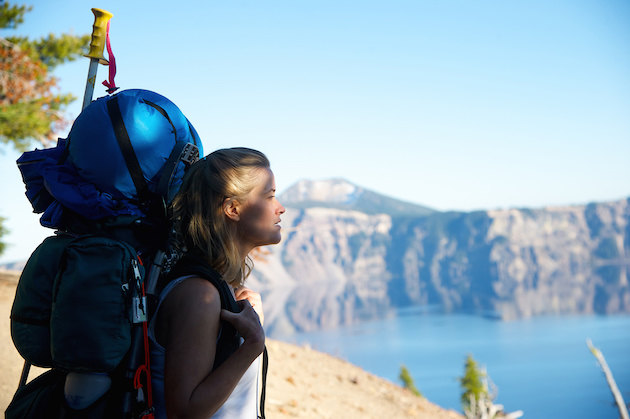
“We asked ourselves, ‘How are you going to shoot a girl with a forty pound backpack?’ Well, we tried a wide shot, we tried walking in front of her, and we tried walking behind her, and we realized the best way was walking backwards in front of her. This way we see her face and we could be with her, it’s very instinctive, whereas when we were walking behind her we only see this big backpack walking around, because it was bigger than her.”
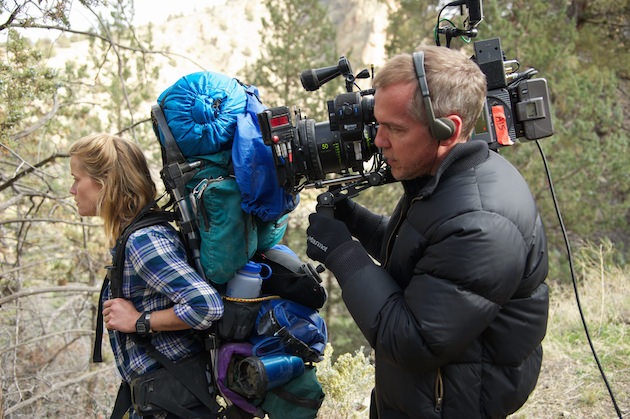
They shot moments from behind her, from a wide angle, but the crew realized that the hand held gave them the advantage of experiencing the trek through Witherspoon’s reactions. “We realized we wanted to be with her, we wanted to see her face, we wanted to react to what she sees, then I’d show what we see was looking at. The entire movie all is her point of view. It’s funny, I walked backwards with the handheld almost the whole movie, right up until the last scene. Then we used a steadicam, because now she’s found herself, the camera should be floating. So I called one of my friends and we did two days of steadicam, so still walking backwards but now with the steadicam. I got in shape without knowing it.”
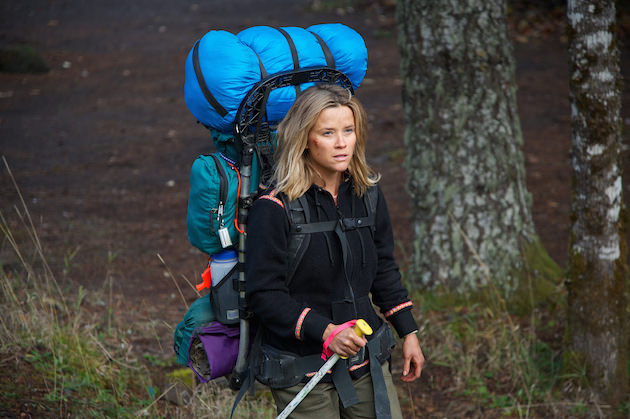
Many of Bélanger’s friends were surprised after seeing the film to learn that it was shot primarily using a handheld camera. He relayed a trick to making your handheld camera work, especially while walking backwards on rocky terrain, look seamless. “When you’re walking backwards with someone, you have to walk at the exact same pace, because when you walk there’s the transfer of weight, so if you do it at the same time with the person you’re filming, you don’t notice it.” He admitted that it’s very hard to do, something he learned over many years. “It’s like playing music with someone, you look at her and you go, ‘Okay, one-two-three-four, one-two-three-four…when her left foot goes down, my right foot goes down.”
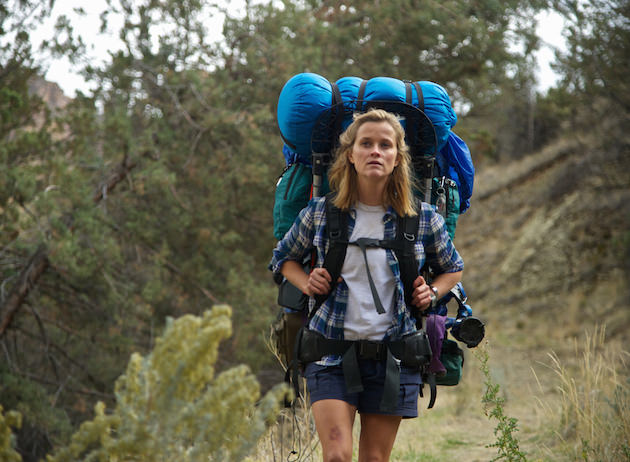
Bélanger said that although the film was made with a small crew, it was a very precise process. “With the progression of the character, it was like making a puzzle, so each shot was a piece of that puzzle,” he says. “Reese was always right on the note, everyone was doing the same movie, so we just did it, if we had to, we’d wait for the light, whatever it took. I felt lucky to be there most of the time.”
That luck manifested itself in many ways. One day, it arrived in the form of smoke. “At one point we had a scene where we knew we needed a sunset, but what we didn’t know was that there were Native Americans burning a field a few miles away. The wind brought the smoke into the scene, it was like having the biggest smoke machine ever. And this smoke was in the background, and it looked like this early morning mist, which was very nice. This was in Mount Hood in Oregon, in the very early morning. We just took the gift.”
Strayed’s memoir was both a great piece of nature writing and a poignant, painfully honest reflection of her life, the structure was fluid, the memories came back in the middle of recollections of the hike itself. For the flashbacks in the film, Bélanger wanted a different look from the clean, naturally lit scenes of the hike. “We wanted a different treatment for flashbacks, so I used older lenses, less sharp, more orange-y, more out of focus, and this created a rougher look.”
There was, however, almost no CGI, save for the snow, a few telephone poles, and a fox. “Everything was done on camera. The color and contrast was changed on camera, not in post production, which we did by choosing the right lenses and exposure. We did add a fox, removed some telephone poles, and then the snow storm at the café. The snake you see on the trail, though, that was there for real.”
The Dallas Buyers Club shoot made Bélanger, director Vallée, Robin Mathews and the rest of the carry-over crew very attuned to filming fast and with a very tight budget. Wild’s production was just a touch more forgiving, giving them a bit more money and a bit more time (35 days of principal photography) to get what they needed. “We had transportation, we had good housing, we had enough time,” Bélanger said, almost wistfully.
Wild is a film about a young woman plunging into nature in an attempt to get a clearer picture of who she is and what she might become. Witherspoon is in nearly every single frame, and Bélanger and the rest of the crew understood that the most important piece of scenery in the film would be her face.
“The idea was very simple. We always said we’re going to frame her face, the imagery, and the landscape the same way, which means the landscape is very important, and when her face enters the frame, we’ll rack focus to her, and then her face will become the landscape. We were just trying to capture what is great about America, which could either be the landscape or her face.”
